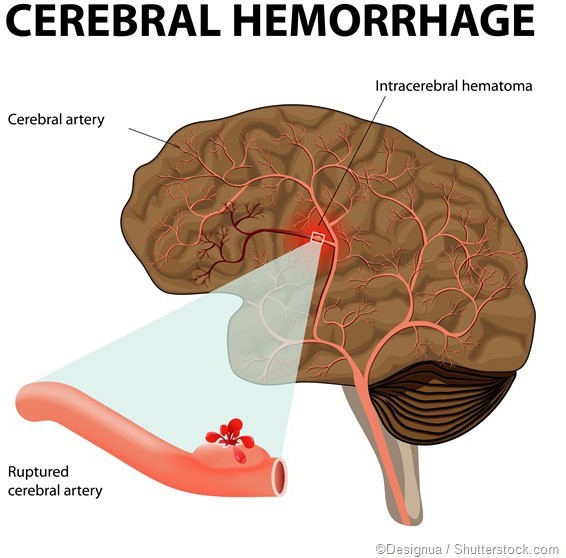A patient is admitted with hypernatremia caused by being stranded on a boat in the Atlantic Ocean for five days without a fresh water source. What is this patient at risk for developing?
Stress fractures.
Cerebral bleeding.
Atrial dysrhythmias.
Pulmonary edema.
The Correct Answer is B
Cerebral bleeding. Choice A rationale:
Stress fractures are not directly related to hypernatremia. Hypernatremia is an electrolyte imbalance, and its main effects are related to cellular dehydration and neurological symptoms rather than bone fractures.
Choice B rationale:

This is the correct answer because hypernatremia can lead to severe dehydration and cause neurological complications, including cerebral bleeding. The brain cells can shrink due to water loss, causing blood vessels to rupture, leading to bleeding in the brain.
Choice C rationale:
Atrial dysrhythmias are not directly associated with hypernatremia. Hypernatremia primarily affects the central nervous system and can lead to neurological symptoms rather than cardiac dysrhythmias.
Choice D rationale:
Pulmonary edema is not a likely consequence of hypernatremia. Pulmonary edema is associated with fluid volume excess, not fluid volume deficit, which is characteristic of hypernatremia.
Nursing Test Bank
Naxlex Comprehensive Predictor Exams
Related Questions
Correct Answer is A
Explanation
The correct answer is choice A: Encourage the patient to breathe in and out slowly into a paper bag.
Choice A rationale:The patient’s arterial blood gas (ABG) results indicate respiratory alkalosis, as evidenced by the elevated pH (7.48) and decreased PaCO2 (25 mm Hg). Respiratory alkalosis often results from hyperventilation, which can occur due to anxiety. Breathing into a paper bag helps to increase CO2 levels in the blood, thereby correcting the alkalosis.
Choice B rationale:Administering oxygen is not appropriate in this scenario because the patient’s PaO2 is already elevated (110 mm Hg), indicating that oxygenation is not the issue. Providing additional oxygen would not address the underlying problem of hyperventilation and respiratory alkalosis.
Choice C rationale:Intravenous sodium bicarbonate is used to treat metabolic acidosis, not respiratory alkalosis. In this case, the patient’s HCO3 is within the normal range (24 mEq/L), indicating that there is no metabolic acidosis present.
Choice D rationale:Starting an intravenous fluid bolus with isotonic fluids is not indicated for correcting respiratory alkalosis. This intervention is more appropriate for patients experiencing hypovolemia or dehydration, which is not suggested by the patient’s ABG results.
Correct Answer is D
Explanation
The correct answer is choice D: Reduction of T-wave amplitude.
Choice A rationale:
The amplitude of the QRS complex is not directly affected by changes in serum potassium levels. It represents ventricular depolarization, and its restoration would not be an expected outcome of polystyrene sulfonate treatment
Choice B rationale:
Shortening of the P-wave duration is not an expected change with polystyrene sulfonate treatment. The P-wave represents atrial depolarization, which is not significantly impacted by the administration of this medication
Choice C rationale:
Widening of the QRS complex is associated with high serum potassium levels. The goal of polystyrene sulfonate treatment is to lower potassium levels and, thus, return the QRS complex to its normal width
Choice D rationale:
Polystyrene sulfonate aims to reduce serum potassium levels. When effective, this should result in a reduction of T-wave amplitude, which is a common ECG change seen with hyperkalemia
In conclusion, choice D is the correct answer, as a reduction in T-wave amplitude would be the expected change on the client's ECG if polystyrene sulfonate effectively lowers their serum potassium level.
Whether you are a student looking to ace your exams or a practicing nurse seeking to enhance your expertise , our nursing education contents will empower you with the confidence and competence to make a difference in the lives of patients and become a respected leader in the healthcare field.
Visit Naxlex, invest in your future and unlock endless possibilities with our unparalleled nursing education contents today
Report Wrong Answer on the Current Question
Do you disagree with the answer? If yes, what is your expected answer? Explain.
Kindly be descriptive with the issue you are facing.
